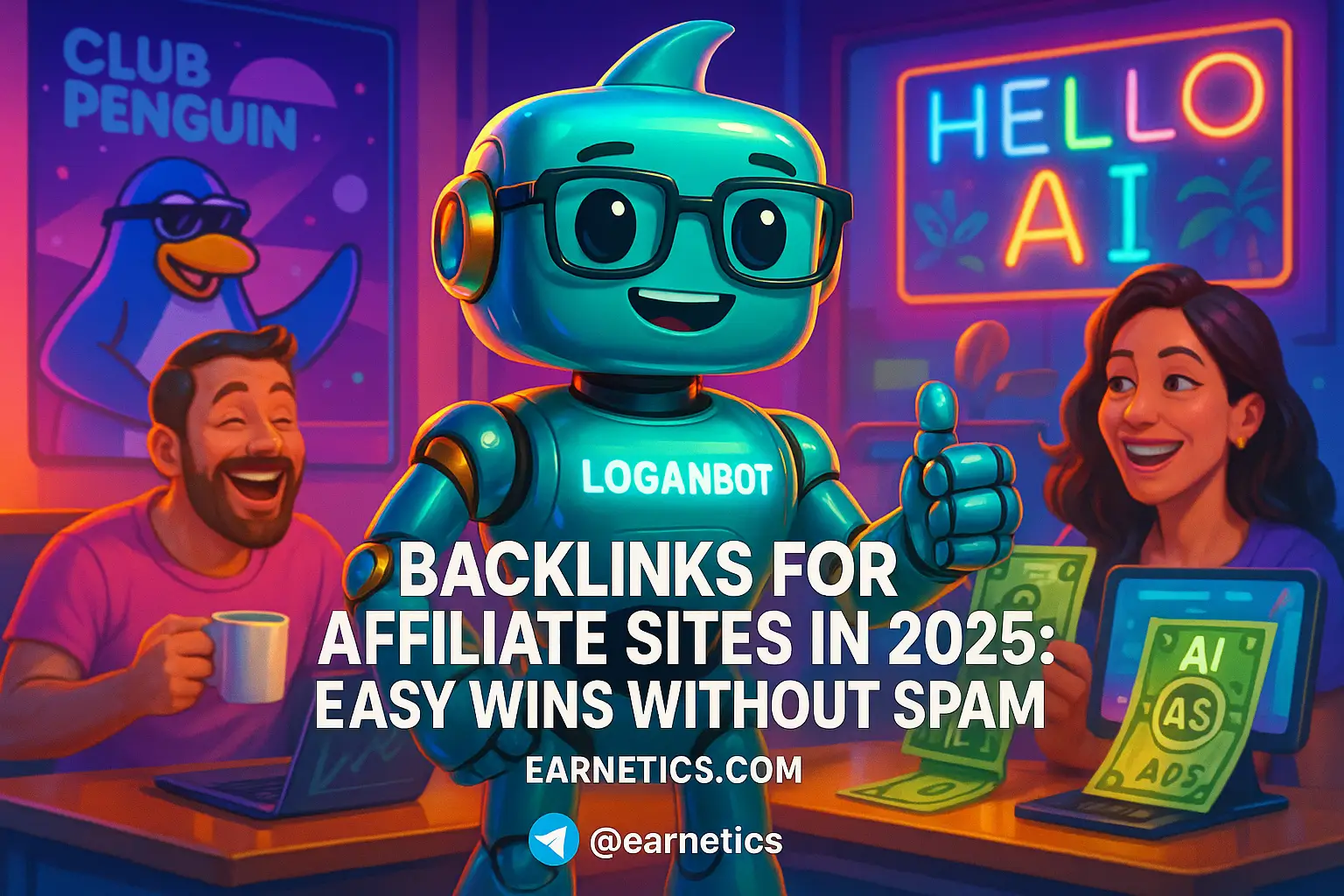Introduction – Affiliate site architecture in 2025: why structure decides revenue
Affiliate site architecture is the practical blueprint I rewired in 2025 to turn sprawling product catalogs, AI search shifts, and intent into steady revenue.
I remember staring at my analytics last winter like it owed me money. Pages indexed, clicks climbing, but conversions stuck like gum on a shoe. So I rebuilt the site from the ground up with a clear plan: hubs, spokes, and tight silos that match today’s AI-driven search and user intent. That rewrite stopped the leaks and started feeding high-intent pages the link equity and crawl love they needed.
Since prior years, search changed fast: SERP features multiply, AI-driven ranking and intent grouping blur the lines between queries, and crawl budgets are tighter for big catalogs. Randomly publishing a dozen thin reviews no longer cuts it. You need architecture that signals topical authority, funnels link equity, and makes it obvious to both users and search engines where the money pages live.
In this piece I walk you through practical architecture patterns that I used to boost SEO and conversion while making the site scalable. You’ll get design patterns for hub-and-spoke builds, content siloing that actually holds up, internal linking rules that move PageRank where it matters, technical moves to stop duplicate content chaos, and conversion-first page templates that earn clicks. I also include measurement tips and the common mistakes I burned my fingers on so you won’t repeat my crap.
Quick keyword snapshot for this playbook: primary keyword – Affiliate site architecture. High-traffic secondary keywords I focused on: hub-and-spoke SEO, content siloing, internal linking strategy, technical SEO for affiliate sites, affiliate site conversion optimization, site architecture for scaling content. LSI and related terms I used while planning: topical hierarchy, buyer intent mapping, crawl budget management, canonicalization, faceted navigation, category hubs, buyer’s guide hub, review pages, featured snippets, internal PageRank proxy.
Hub-and-Spoke Model
What is a hub-and-spoke for affiliates
When I rebuilt my biggest site, the hub-and-spoke model stopped being a concept and became a map I followed. In plain terms, a hub is a strong, evergreen page that aggregates intent and earns links – think category hubs, buyer’s guide hubs, and long-form comparison pages. Spokes are the focused pages that support the hub – detailed reviews, product pages, and how-tos that funnel relevance and link equity back to the hub.
This structure beats flat architectures when you have larger catalogs or overlapping keywords. Instead of 50 similar review pages all competing, you create a hub that covers the high-level intent and spokes that answer transactional or micro-intents. I saw organic traffic consolidate to hubs, while spokes began converting at higher rates because they were easier to find from the hub’s internal links.
Planning hubs by buyer intent
I mapped every hub to a buyer intent stage: research, comparison, and purchase. Research hubs target informational queries and featured snippet opportunities. Comparison hubs aim for comparison and consideration queries where users narrow choices. Purchase hubs or category hubs target high-conversion queries and funnel link equity to product review spokes.
My planning tip: prioritize hubs that can earn links and rank for featured snippets. Build a single authoritative guide per product family, then link the best-performing spokes to that guide. That was the single move that improved my organic CTR for high-intent terms.
Cross-linking patterns and silo boundaries
Linking patterns make or break a hub-and-spoke setup. I use mostly one-way spoke-to-hub links plus a few strategic hub-to-spoke links for discovery. That preserves topically focused silo signals and concentrates authority where it converts.
Rules I followed: avoid bidirectional linking between random spokes, keep hub navigation shallow, and use contextual anchor text that reflects intent. This prevented topical dilution and kept my hub pages from looking like generic directories.
Content Siloing Strategies
Topical hierarchy and taxonomy design
For my silos, I built a logical category tree that matched how users search. Top level was product family, second level was use case and price tier, third level was brand and model. Names matched searcher language – not internal jargon. That naming consistency makes it easier to map keywords into silos and avoids orphaned pages.
I recommend a keyword mapping sheet that links target keywords to the exact silo node and intended page type. When I enforced that mapping, duplicate coverage fell and rankings smoothed out.
URL, breadcrumbs, and onsite signals
URLs and breadcrumbs became my sitemap to search engines. I used clean folder-based URLs like /outdoor-cameras/budget/ to signal membership. Breadcrumb trails matched the URL and the H1/H2 hierarchy on the page so on-site signals reinforced each other.
I also used schema for category and product pages to help search engines understand the structure. Small changes here moved pages from DR 20 to being indexed more reliably across crawls.
Siloing vs. topic clusters – the hybrid approach
Strict siloing is tidy but brittle. Topic clusters are flexible but can blur authority. My compromise was hybrid: strict silos where product taxonomy is clean, flexible clusters where users search by problem rather than product.
That meant sometimes placing a problem-focused hub outside a product silo and linking it into multiple silos, but only when the content genuinely served cross-silo intent. This balanced scale with E-A-T and prevented over-siloing mistakes that make sites feel siloed to users.
Internal Linking & Crawl Efficiency
Anchor text, link equity flow, and priority pages
I treat internal linking like plumbing – direct the pressure to where it makes money. Anchor text should be varied but descriptive. I avoid keyword stuffing and instead use natural anchors: product name, model + review, or intent phrases like “best for beginners”.
Concentrate equity on high-value review and purchase pages. I set up a list of priority pages and made sure each had at least three contextual internal links from strong hubs or guides. Over time, those pages rose in rankings and conversions. Avoid over-optimization by rotating anchors and limiting identical anchors site-wide.
Navigation, footer links, and crawl depth
Navigation design is where crawl efficiency meets UX. I keep money pages within three clicks of the homepage and avoid burying them behind endless pagination. For tag pages and faceted filters I echo Google’s guidance and either block via robots or canonicalize to clean category pages.
Footer links are for utility and broad site sections – I don’t use them to pump SEO juice. That preserved the site’s internal link profile and reduced pointless links crawling low-value pages.
Tools and audits for internal link health
I run crawl reports weekly with my favorite crawlers and a link graph to identify orphan pages and thin spokes. Metrics I watch: number of internal links to priority pages, average crawl depth of money pages, and internal PageRank proxies like link equity score from tools.
Quick fixes I used: add contextual hub links, remove redundant footer links, and create internal redirects for old review pages. Those small moves often yielded outsized ranking lifts.
Technical SEO & Scalability
Performance, Core Web Vitals, and mobile-first
Speed matters more than ever for affiliates because low-intent pages get skipped fast. I prioritized server response, image optimization, and lazy loading. Moving to a CDN and a headless CMS for large catalogs cut page load times dramatically.
Core Web Vitals mattered for user trust and drop-off. I focused on Largest Contentful Paint and Cumulative Layout Shift fixes first – those reduced bounce rates on review pages and improved conversion. For guidelines I followed Google’s recommendations and real-user monitoring to measure impact.
Reference: see Google’s guide on Core Web Vitals for the specifics.
Canonicalization, pagination, and faceted navigation
Duplicate content from filters wrecks index budgets. I used canonical tags pointing to canonical category pages, parameter handling in Search Console where necessary, and server-side canonical logic for faceted nav. Pagination I handled with clear rel links or canonical to the main collection when content overlapped.
When in doubt I prefer server-side controls and canonical rules over JavaScript-only solutions that confuse crawlers.
Site architecture for scaling content
As catalogs grow, folder strategies matter. I used subfolders for major categories to keep signals clear and avoided subdomains unless the content was truly separate. Templates are lifesavers – but only when there is a QA process. I automated page generation for low-variance product specs and paired it with manual review for buying advice to avoid thin, robotic content.
Crawl-budget management included sitemap segmentation, removing low-value pages from sitemaps, and batching updates so crawlers didn’t waste cycles on unimportant content.
Conversions, Trust & E-A-T
Structuring review and comparison pages for conversions
I redesigned review pages with conversion flow in mind: top-line verdict, spec box, pros and cons, short comparison table, and clear CTAs. Microcopy matters – subtle cues like “As an editor I tested…” boosted clicks because it sounded human, not affiliate-bot.
Affiliate links I place after the summary and again after the pros/cons. I also tested button anchors versus text links and found buttons improved CTR on mobile. Track everything with UTM tags so you know which placements convert.
E-A-T signals within architecture
E-A-T is more than buzzword placement. I surfaced author bios on hubs and review spokes, linked to credential pages, and added update timestamps. For research-heavy hubs I included citations to manufacturer specs and reputable publications. Where appropriate I used internal pages to centralize sources so hubs could point to a single research repository.
Those structural choices made it easier to demonstrate content ownership and expertise at scale.
A/B testing architecture elements
Testing layout and link placement is how I proved what worked. I ran A/B tests on CTA placement, hub layouts, and anchor styles. Measure lifts across the entire silo, not just a single page, because architecture moves often shift user flows across multiple pages.
Set up experiments with consistent goals – conversion rate, clicks to affiliate link, or time to first purchase – and use statistically significant thresholds before rolling changes site-wide.
Conclusion
Affiliate site architecture changed my life and my revenue. The five levers I leaned on were hub-and-spoke builds that match buyer intent, content siloing that preserves topical authority, a surgical internal linking strategy to move equity, technical SEO for scale and speed, and conversion plus E-A-T integration so users and search engines trust the site. Taken together, these moves stopped the cannibalization, focused link equity, and made scaling sane.
Short-term wins I recommend: fix broken internal links, create or consolidate a high-value hub, and tidy your URLs and breadcrumbs. Medium-term projects: redesign silos, implement canonical rules for faceted nav, and roll out prioritized templates for reviews. Long-term: automate safe template generation, invest in a CDN/headless CMS for speed, and build a QA loop so automation does not publish trash.
KPIs to track: organic traffic by silo, crawl frequency and depth, conversion rate on review pages, index coverage in Search Console, and Core Web Vitals. Watch for common pitfalls: over-siloing that blocks useful cross-links, thin spokes that cannibalize hubs, broken link equity caused by random redirects, and scaling without human QA. I learned the hard way that automation without quality checks just scales mistakes.
Start with a simple audit: map your top 20 money pages, identify their hubs, count internal links to each, and measure page speed. Then prioritize the one change that moves both SEO and conversion – my bet is on creating a single buyer’s guide hub for your most competitive product family.
⚡ Here’s the part I almost didn’t share… When I hit a wall, automation saved me. My hidden weapon is Make.com – and you get an exclusive 1-month Pro for free.
🔥 Don’t walk away empty-handed. If this clicked for you, my free eBook Launch Legends: 10 Epic Side Hustles to Kickstart Your Cash Flow with Zero Bucks goes even deeper into systems and automation that turned my experiments into real income.
If you want a hands-on checklist to start, explore more guides on Earnetics.com and take the first step toward a stable, scalable affiliate site architecture that actually pays.


